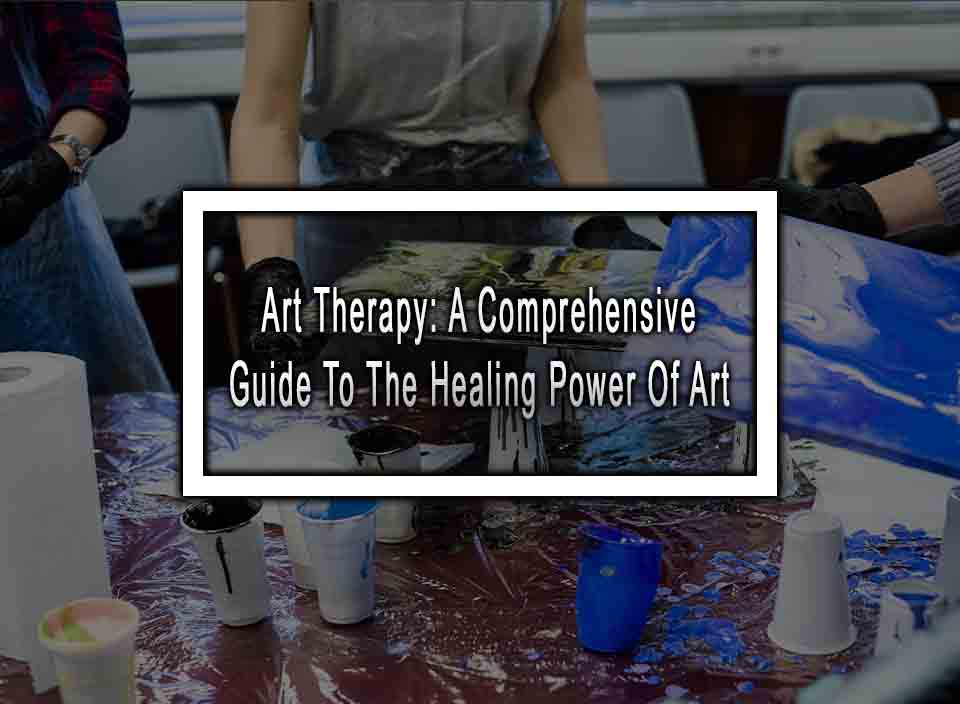Table of Contents
ToggleDiscover the Amazing Benefits of Art Therapy
Art therapy is a powerful form of therapeutic approach that allows individuals to explore themselves and their emotions in a non-verbal way. It’s a creative process that involves creating art to promote emotional, physical, and mental health. In this listicle, we’ll explore the world of art therapy and discover the amazing benefits it offers.
Art Therapy and its History
Art therapy has been around for centuries, dating back to ancient civilizations who used art to express their emotions. The modern-day concept of art therapy, however, was officially recognized in the 1940s. Today, it’s a highly regarded form of psychotherapy that is used in various settings, including hospitals, schools, and community centers.
What is Art Therapy?
Art therapy involves using art as a means of expression to promote individual growth, healing, and overall well-being. It can be used on its own or in combination with other forms of therapy to help individuals process and express their emotions. Examples of forms of art therapy include painting, drawing, sculpture, and collage.
Benefits of Art Therapy
Reduces stress and Anxiety
Art therapy has been shown to reduce stress and anxiety levels. The creative process involved in making art takes the mind off worries and allows for relaxation. It also releases endorphins, which are the body’s natural stress and pain relievers.
Fosters Self-Discovery
Art therapy enables individuals to explore their inner selves and express their emotions in a safe and non-judgmental environment. Through the process of creating art, individuals can discover more about themselves and their personalities. They can also identify and work through their emotions, which leads to a more profound understanding of themselves.
Improves Communication
Art therapy provides individuals with a medium of communication that doesn’t involve verbalization. They can express themselves through creative processes, which can be easier for some individuals. This form of expression can be especially helpful for those who don’t feel comfortable with verbal communication.
Promotes Positive Behaviors
Art therapy can promote positive behaviors, such as self-confidence, self-esteem, and self-awareness. It can also promote communication, problem-solving, and coping skills. These behaviors can translate to all areas of an individual’s life, making them more comfortable and successful.
Who Can Benefit from Art Therapy?
Anyone can benefit from art therapy regardless of their age, background, or skill level. However, it’s especially useful for individuals who have experienced trauma, mental health issues, chronic pain or have difficulty expressing themselves. It’s also helpful for those who desire personal growth and want to explore more about themselves.
Conclusion
Art therapy is an effective form of psychotherapy that offers numerous benefits. It can help individuals process trauma, reduce stress and anxiety, promote self-awareness and self-confidence, and improve communication skills. Art therapy can be used in various settings and is beneficial for individuals of all ages, backgrounds, and skill levels. Discover the healing power of art therapy today and take the first step towards improving your emotional, physical, and mental well-being.
Art Therapy FAQ
Here are the most common questions about art therapy.
What kinds of art materials are used in art therapy?
Art therapists use a wide variety of art materials, including paints, markers, crayons, collage materials, and clay. The choice of materials will depend on the specific needs and preferences of the individual client.
What happens during an art therapy session?
During an art therapy session, the client will work with the therapist to explore their thoughts and feelings through the creative process. The therapist may ask the client to focus on particular issues or themes, but the client is free to create any artwork that he or she chooses.
Do I need to be artistically talented to benefit from art therapy?
No, artistic talent is not required to benefit from art therapy. The focus is on the process of creating, rather than the product itself. In fact, some individuals who struggle with perfectionism or self-criticism may find that art therapy helps them to let go of these tendencies and embrace the creative process.
How long does art therapy usually last?
The length of an art therapy session can vary depending on the needs of the individual client. Sessions may last anywhere from 30 minutes to several hours, depending on the goals of the therapy.
Is art therapy covered by insurance?
Some insurance plans may cover art therapy sessions, but it depends on the specific policy and provider. It is important to check with your insurance company to see if they cover art therapy services.












